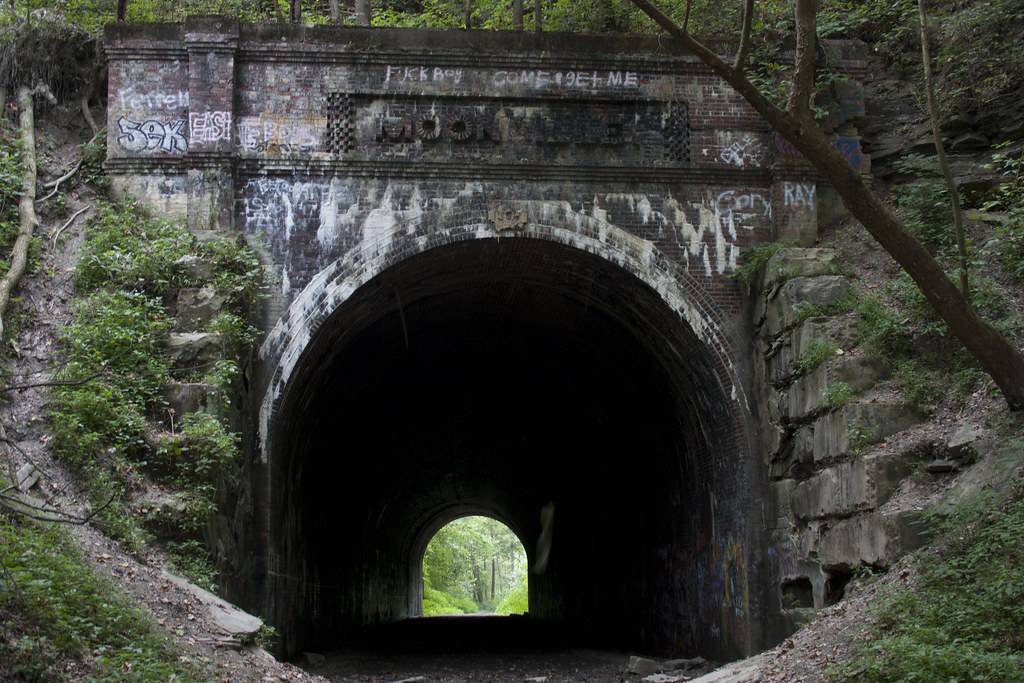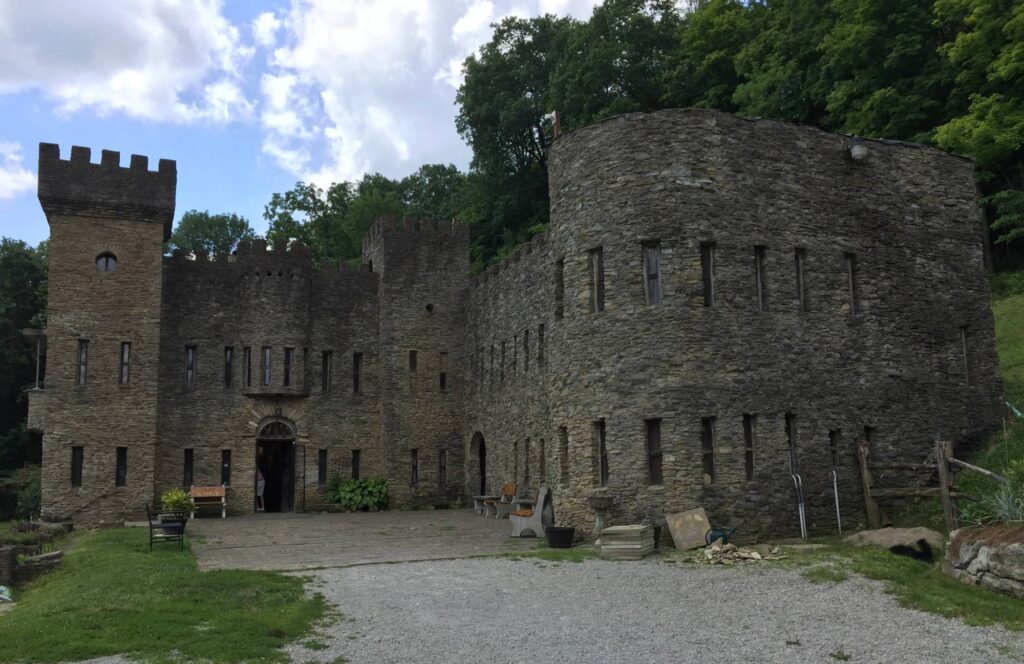When you think of “Cincinnati”, chances are you’re thinking of that fairly large city that formed on the banks of The Ohio River. After all, there are no other cities with that name, although there are a few other places that do share the name: Cincinnati, Missouri is an unincorporated community a short distance northeast of the Mark Twain Lake, or about eighty miles northwest of St. Louis; Cincinnati, Iowa, Population 290 as of the 2020 census, is the first town you come to when driving north on State Route 5 when coming in from Missouri; the one in Indiana is another unincorporated community in Gereene County; there is a Cincinnati township in Illinois that consists of just over 26 square miles, and finally Cincinnati, Arkansas, population of 306 finally grew large enough to be a census-designated place in 2020. For the most part, all of these got their names because either the founder of those communities were from Cincinnati, Ohio, or because there was something about the area that reminded them of Cincinnati, usually having something to do with hills.
The Name Cincinnati has also popped up in history noting things that aren’t places, such as a horse owned by Ulysses S. Grant, a passenger train on the B&O Railroad … and I’m not counting the number of songs, television shows or movies, and books that were published because they’re all point to that big city on the Ohio River.
So, I think it’s clear to say that “Cincinnati” is one of a kind, although with a few small but notable exceptions.
The question then becomes, where did Cincinnati get its name? I performed a non-scientific poll among a few historians I know, and I got some rather wild answers. Most knew about The Society of the Cincinnati, but none knew what the society did or where it came from, one person claimed it came from the roman god Cincinnatus (Lucius Quinctius Cincinnatus was many roman things, but a god he wasn’t). Perhaps had I contacted the Cincinnati Historical Society I would have gotten some better answers, but at least the one who talked about some strange illuminati conspiracy theory did make me laugh.)
So, Where Did Cincinnati Get Its Name?
Cincinnati got its name from The Society of the Cincinnati, a hereditary society formed by soldiers who took part in The American Revolution. The Society is headquartered, in case you couldn’t have guessed, on Massachusetts Avenue in Washington D.C. so if you’re in the area, take a selfie and send it to me, k?
As so often happens with history, once one question is answered, many more take its place:
- Just what is this Society of the Cincinnati? What do they do? Where do they come from?
- Why was the society named after Lucius Quinctius Cincinnatus? Who was he and what did he do?
- Who decided that the city of Losantisville (which had been the town’s name for several years) needed to be changed, and how did they decide on Cincinnati?
Well, to start answering these questions, I suppose we need to look at the early history of Cincinnati.
A Brief History of Losantiville
After The Revolutionary War, the new Nation started to think it was time to start expanding westward. Focusing on the land North of what they were now calling The Ohio River, they sent some guys to check things out. These guys reported back that there was lots of fertile land, a few friendly native people (and maybe some not-so-friendly) so maybe it’s time to put some settlements out here.
Ok, it was a bit more complicated than that, considering The French were also scoping the place out, wanting to nab some of that land for New France. And when some agreements were made with some of the indigenous tribes, other tribes that weren’t included weren’t exactly happy with the ways things were turning out.
So, there’s this guy named John Cleves Symmes in 1786 and he’s in the Continental Congress (representing New Jersey) and he’s a pretty smart guy who sees a lot of promise in some land between a few rivers along the Ohio River. (Then again, he can’t be all that smart either, since he thinks the earth is hollow and he wants to travel to The North Pole to enter the Hollow Earth and maybe put a few settlements in there. Ultimately, the guy did help inspire a certain Jules Verne novel, so maybe the Jury on his intelligence should still be out.)
Symmes purchased a bunch of land that most Historians want to call The Symmes Purchase (however, others want to call it the Miami Purchase, since it was all the land between the two rivers (somewhere between one and two million acres) both of which they had already named Miami, after the tribes that had lived in the area, not after that big city in Florida that didn’t exist yet.
Symmes himself started a settlement of his own. He wanted to call it Symmes City, but that never happened. Instead, it became the Village of North Bend. This was located not far from where the Greater Miami met the Ohio River. Meanwhile, another settlement was also being established not far where that other river, the Little Miami met the Ohio River. That town became known as Columbia.
A third settlement they called Losantiville formed across the river from where The Licking River met the Ohio. This name they made up by combining four unrelated things: L for The Licking River, “os” from the Latin word for mouth, “anti” is Greek for opposite, and “ville” is French for town.
Losantiville started with Eleven families, which consisted of twenty-four men and an unknown number of women and children because history at this time didn’t think they were all that important. However, unlike North Bend and Columbia, Losantiville started growing at a much quicker pace.
People really seemed to like Losantiville, except for a few small things. Sure, a few people thought the town’s name was kind of dumb, but what they really hated were all the times indigenous tribes showed up trying to pick a fight … although they also kind of hated how often The Ohio River flooded. But, at least there were all those nearby hills they could rebuild on.
Fort Washington (named after President George) was soon built at the northeast corner of town to help fight off the native “invasions”. It stayed an active military installment until The Treaty of Greenville was signed after The Battle of Fallen Timbers when it was no longer needed all that much.
In 1790, the Governor of The Northwest Territory was a guy named Arthur St. Clair and he was one of the guys who thought that the name Losantiville was kind of stupid. He’s also the president of this group called The Society of the Cincinnati (his friend Israel Ludlow was also an important office holder in the society, too). Arthur decided that as Governor, he had the authority to change the name of any town he wanted, so on his order the town became known as Cincinnati for obvious, self-promoting reasons.
The Society of the Cincinnati
The year is 1783 and Major General Harry Knox (of whom Fort Knox in Kentucky will eventually be named after) is having a little gathering in Fishkill, New York. Heading the meeting was Major General Friedrich Wilhelm von Steuben, and the orator was Lieutenant Colonel Alexander Hamilton (who may or may not have been sitting in the corner wondering what it would take for someone to create a Broadway Musical about him). Everyone in attendance had been a ranking officer fighting the British in the Revolutionary War as part of the Continental Army or Navy or the French Army or Navy. It was at this meeting that the idea of the society was put forth by Knox, and since apparently everyone thought it was a good idea.
The group was to become a fraternal order, a hereditary society, to perpetuate American Independance and “to render permanent the cordial affection subsisting among the officers”. But, not all who fought for American Independance was included as Colonial Militias and Minutemen were not allowed to join.
The society was set up as a Primogeniture, meaning that memberships were given to a limited number of people. Those memberships were then passed down from generation to generation through the first male legitimate heir of the member. And it was this fact that most likely led to the group’s largest criticism.
Benjamin Franklin was one of the most outspoken against the order. To him, the group resembled an attempt to create a noble order in the new nation, which was a large part of what the American Revolution was all about. He also pointed to the order’s insignia, which consisted of an eagle as part of its emblem as being a symbol of heraldry. He called the group “an Order of hereditary Knights”.
Fast forward a few years … cough snort … and today the organization is still going strong and is considered the oldest patriotic society in the US. Active installations are currently operational in each of the original thirteen states plus one more in France.
Lucius Quinctius Cincinnatus
The Society of the Cincinnati got its name from Lucius Quinctius Cincinnatus, and he was a big deal back in his day (around 519 BC, we think). He was a dictator, a landowner, a politician, and military leader who, towards the end of his life, just wanted to work faming his land and taking it easy.
Anyway, according to (historically debatable) legends, when Rome went to war with itself (or, the general public went to war with Roman aristocracy and politicians over a number of issues) Cincinnatus assumed complete control over the State, which was his legal right to do, but he was also popular with the plebes (common folk) so they are the ones who really demanded this. Sixteen days later, because of Cincinnatus’ leadership, the war came to an end, and everyone lived happily ever after. Or, something. At least they were happier than they were sixteen days prior.
Ever since, Cincinnatus has been considered an example of civic virtue.
Welcome to Cincinnati
So, back to our narrative. Losantiville is now called Cincinnati and while quite a few people didn’t appreciate the name changed, there was nothing they could do about it, so they generally learned to accept it.
People were moving to the settlement of Cincinnati, Northwest Territory for a number of reasons. Many of the people who had acquired land had been Revolutionary War soldiers who were given (or cheaply sold) parcels of land because the new nation felt like it had to do something for its veterans. Although, the majority of the officers didn’t particularly like the idea of packing up their homes, leaving friends and family and trying to make a life in a new city, they wound up selling their allotments earning them a pretty nifty sum of money.
By 1795, the city had grown quite a bit, attracting some furniture makers, some butchers, a couple of brewers, and even one French Pastry Chef. But, one of the bigger trades seemed to cater more toward travelers and settlers heading even further down The Ohio River offering temporary lodging and warehouses to store their stuff.
At the time, the city did have its fair share of problems, though. River flooding was an occasional hassle, but the big thing now was lawlessness. The closest thing they had to any type of police force was Fort Washinton, which was kind of helping to keep the indigenous tribes from attacking too often, but they were mostly useless at anything else.
The big problem was what was happening on the west side of town – the area was slowly filling with saloons, gambling halls, and bordellos. And since the only people who could deal with the unruly patrons were the soldiers stationed at Fort Washington, who were frequent (nightly) visitors to these establishments and were just as much a part of the problem as the other citizens, there wasn’t much that could be done.
The Northwest Territory Secretary, Winthrop Sargent, began to issue a series of proclamations trying to keep the settlement from getting too “licentious” and “extremely debauched”. The Cincinnati residents, however, thought the man was trying to limit their fun, so they weren’t happy. It wasn’t until he attempted to pass a proclamation that prevented local businesses from selling or serving alcohol to soldiers stationed at Fort Washington that everyone had enough.
Needless to say, Winthrop Sargent was so loved by the citizens (and those stationed at Fort Washington) that while he was out of town, his home was used as target practice,
On January 1, 1802, Cincinnati was finally chartered as an official town and at the same time James Smith (yes, that was his real name) was installed as Town Marshall. It wouldn’t be long before Smith helped form a “Night Watch” or groups of concerned citizens who would “patrol” the streets at night while trying to keep things lawful. This also signaled the final nail in the coffin of Fort Washington causing it to close for good.
Finally, on March 1, 1803, Cincinnati, Ohio became a thing when the state joined The Union as the 17th State.




Pingback: Ohioans You Should Know - John Cleves Symmes - The Ohio Project